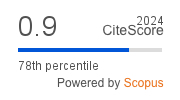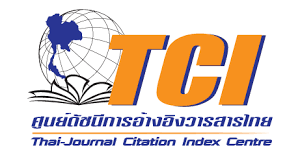Understanding Behavioral Intention to Use Drone Technology for Sustainable Development: The Facilitating Role of Behavioral Learning Engagement with Instructional Videos
Keywords:
Drone technology, Sustainable development, Learning engagement, Instructional videos, Behavioral intentionAbstract
Although drone technology can be regarded as one of the most viable technologies for achieving sustainable development goals (SDGs), individuals are still unaware of its benefits and challenges. During the pandemic, drone technology benefited businesses and communities as a mechanism of sustainable crisis management by minimizing human contact in different environments despite its safety concerns. However, few studies have shown what salient factors influence individuals’ intention to use drone technology in the context of sustainable development. Therefore, drawing on the theory of planned behavior (TPB), we investigate individuals’ behavioral intention to use drone technology for combatting pandemics while achieving SDGs. We also examine how individuals’ learning engagement with instructional videos facilitates their intention. Our findings suggest that only perceived usefulness positively influences individuals’ attitudes, which leads to their behavioral intention to use drone technology for SDG-related activity. In contrast, their perceived safety concerns and pandemic helpfulness do not significantly impact the formation of their positive attitudes toward drone technology use. Furthermore, we found that an individual’s sustainable development concerns and behavioral learning engagement are likely to play a significant role in facilitating their intention to use drone technology by their attitudes toward them. Based on our findings, this study contributes to the theoretical literature on technology adoption and learning engagement with instructional videos. This study also provides practical insights into how organizations and policymakers promote drone technology for sustainable development through informative and educational campaigns with instructional videos.
References
Ajzen, I. (1991). The theory of planned behavior. Organizational Behavior and Human Decision Processes, 50(2), 179-211.
Ajzen, I., & Fishbein, M. (1980). Understanding attitudes and predicting social behaviour. Prentice-Hall.
Al-Emran, M., & Griffy-Brown, C. (2023). The role of technology adoption in sustainable development: Overview, opportunities, challenges, and future research agendas. Technology in Society, 73, 102240.
Alalwan, A. A., Dwivedi, Y. K., & Rana, N. P. (2017). Factors influencing adoption of mobile banking by Jordanian bank customers: Extending UTAUT2 with trust. International Journal of Information Management, 37(3), 99-110. https://doi.org/10.1016/j.ijinfomgt.2017.01.002
Alsamhi, S. H., Shvetsov, A. V., Kumar, S., Shvetsova, S. V., Alhartomi, M. A., Hawbani, A., Rajput, N. S., Srivastava, S., Saif, A., & Nyangaresi, V. O. (2022). UAV computing-assisted search and rescue mission framework for disaster and harsh environment mitigation. Drones, 6(7), 154.
Arnold, R., Jablonski, J., Abruzzo, B., & Mezzacappa, E. (2020). Heterogeneous UAV multi-role swarming behaviors for search and rescue. 2020 IEEE Conference on Cognitive and Computational Aspects of Situation Management (CogSIMA),
Awidi, I. T., Paynter, M., & Vujosevic, T. (2019). Facebook group in the learning design of a higher education course: An analysis of factors influencing positive learning experience for students. Computers & Education, 129, 106-121.
Bachmann, N., Tripathi, S., Brunner, M., & Jodlbauer, H. (2022). The contribution of data-driven technologies in achieving the sustainable development goals. Sustainability, 14(5), 2497.
Bayomi, N., & Fernandez, J. E. (2023). Eyes in the sky: drones applications in the built environment under climate change challenges. Drones, 7(10), 637.
Benbunan-Fich, R., & Hiltz, S. R. (2003). Mediators of the effectiveness of online courses. IEEE Transactions on Professional Communication, 46(4), 298-312.
Berawi, M. A. (2019). The role of industry 4.0 in achieving Sustainable Development Goals. International Journal of Technology, 10(4), 644-647.
Bernardi, R. A. (1994). Validating research results when Cronbach's alpha is below. 70: A methodological procedure. Educational and Psychological Measurement, 54(3), 766-775.
Bétrancourt, M., & Benetos, K. (2018). Why and when does instructional video facilitate learning? A commentary to the special issue “developments and trends in learning with instructional video”. Computers in Human Behavior, 89, 471-475.
Bishop, P., Hines, A., & Collins, T. (2007). The current state of scenario development: an overview of techniques. Foresight, 9(1), 5-25.
Bouchrika, I., Harrati, N., Wanick, V., & Wills, G. (2021). Exploring the impact of gamification on student engagement and involvement with e-learning systems. Interactive Learning Environments, 29(8), 1244-1257.
Carini, R. M., Kuh, G. D., & Klein, S. P. (2006). Student engagement and student learning: Testing the linkages. Research in Higher Education, 47, 1-32.
Chang, W.-W., Yuan, Y.-H., & Chuang, Y.-T. (2013). The relationship between international experience and cross-cultural adaptability. International Journal of Intercultural Relations, 37(2), 268-273.
Choe, J. Y., Kim, J. J., & Hwang, J. (2021). Perceived risks from drone food delivery services before and after COVID-19. International Journal of Contemporary Hospitality Management, 33(4), 1276-1296.
Davis, F. D., Bagozzi, R. P., & Warshaw, P. R. (1989a). User acceptance of computer technology: A comparison of two theoretical models. Management Science, 35(8), 982-1003.
Davis, F. D., Bagozzi, R. P., & Warshaw, P. R. J. M. s. (1989b). User acceptance of computer technology: a comparison of two theoretical models. Management science, 35(8), 982-1003.
Dinko, D. H., & Nyantakyi-Frimpong, H. (2023). The prospects and challenges of using drone-based participatory mapping in human–environment research. The Professional Geographer, 75(3), 441-451.
Dubovi, I. (2022). Cognitive and emotional engagement while learning with VR: The perspective of multimodal methodology. Computers & Education, 183, 104495.
Dunn, T. J., Baguley, T., & Brunsden, V. (2014). From alpha to omega: A practical solution to the pervasive problem of internal consistency estimation. British Journal of Psychology, 105(3), 399-412.
Eagly, A. H., & Chaiken, S. (1993). The psychology of attitudes. Harcourt Brace Jovanovich College Publishers.
Fact.MR. (2023). U.S. Drone Market to Reach US$ 82.9 Billion, at CAGR of 22.2% by 2032. https://www.globenewswire.com/news-release/2023/09/12/2741594/0/en/U-S-Drone-Market-to-Reach-US-82-9-Billion-at-CAGR-of-22-2-by-2032-Fact-MR-Report.html#:~:text=Inexpensive%20Drones%20to%20Become%20Increasingly%20Popular%20across%20the%20United%20States&text=Rockville%20%2C%20Sept.%2012%2C%202023,CAGR%20of%2022.2%25%20through%202032.
Faqih, K. M. (2013). Exploring the influence of perceived risk and internet self-efficacy on consumer online shopping intentions: Perspective of technology acceptance model. International Management Review, 9(1), 67-77.
Faqih, K. M., & Jaradat, M.-I. R. M. (2015). Assessing the moderating effect of gender differences and individualism-collectivism at individual-level on the adoption of mobile commerce technology: TAM3 perspective. Journal of Retailing and Consumer services, 22, 37-52. https://doi.org/https://doi.org/10.1016/j.jretconser.2014.09.006
Goldsmith, E. B., Goldsmith, E. B., Goldsmith, R. E., & Bacille, T. (2015). Social influence and sustainable behavior. Springer.
Green, D., Karachok, A. R., & Gregory, B. (2021). The Potential of Drone Technology in Pandemics. COVID-19 Pandemic, Geospatial Information, and Community Resilience.
Hafeez, A., Husain, M. A., Singh, S., Chauhan, A., Khan, M. T., Kumar, N., Chauhan, A., & Soni, S. (2022). Implementation of drone technology for farm monitoring & pesticide spraying: A review. Information Processing in Agriculture, 10, 192*203.
Hair, J. F., Risher, J. J., Sarstedt, M., & Ringle, C. M. (2019). When to use and how to report the results of PLS-SEM. European Business Review, 31(1), 2-24.
Hsia, L. H., Lin, Y. N., & Hwang, G. J. (2021). A creative problem solving‐based flipped learning strategy for promoting students’ performing creativity, skills and tendencies of creative thinking and collaboration. British Journal of Educational Technology, 52(4), 1771-1787.
Hu, P. J.-H., & Hui, W. (2012). Examining the role of learning engagement in technology-mediated learning and its effects on learning effectiveness and satisfaction. Decision Support Systems, 53(4), 782-792.
Hwang, J., Lee, J.-s., Kim, J. J., & Sial, M. S. (2021). Application of internal environmental locus of control to the context of eco-friendly drone food delivery services. Journal of Sustainable Tourism, 29(7), 1098-1116.
Jiménez López, J., & Mulero-Pázmány, M. (2019). Drones for conservation in protected areas: Present and future. Drones, 3(1), 10.
Joerss, M., Neuhaus, F., & Schröder, J. (2016). How customer demands are reshaping last-mile delivery. The McKinsey Quarterly, 17, 1-5.
Johnson, A. M., Cunningham, C. J., Arnold, E., Rosamond, W. D., & Zègre-Hemsey, J. K. (2021). Impact of using drones in emergency medicine: What does the future hold? Open Access Emergency Medicine, 487-498.
Kaiser, F. G., Wölfing, S., & Fuhrer, U. (1999). Environmental attitude and ecological behaviour. Journal of Environmental Psychology, 19(1), 1-19.
Kapp, K. M., & Defelice, R. A. (2019). Microlearning: Short and sweet. American Society for Training and Development.
Karahanna, E., Straub, D. W., & Chervany, N. L. (1999). Information technology adoption across time: A cross-sectional comparison of pre-adoption and post-adoption beliefs. MIS Quarterly, 23(2), 183-213.
Kearsley, G., & Shneiderman, B. (1998). Engagement theory: A framework for technology-based teaching and learning. Educational technology, 38(5), 20-23.
Kemp, A., Palmer, E., & Strelan, P. (2019). A taxonomy of factors affecting attitudes towards educational technologies for use with technology acceptance models. British Journal of Educational Technology, 50(5), 2394-2413.
Kew, S. N., & Tasir, Z. (2021). Analysing Students' Cognitive Engagement in E-Learning Discussion Forums through Content Analysis. Knowledge Management & E-Learning, 13(1), 39-57.
Khan, R., Tausif, S., & Javed Malik, A. (2019). Consumer acceptance of delivery drones in urban areas. International Journal of Consumer Studies, 43(1), 87-101.
Kim, S., Raza, M., & Seidman, E. (2019). Improving 21st-century teaching skills: The key to effective 21st-century learners. Research in Comparative and International Education, 14(1), 99-117.
Koiwanit, J. (2018). Analysis of environmental impacts of drone delivery on an online shopping system. Advances in Climate Change Research, 9(3), 201-207.
Kornatowski, P. M., Bhaskaran, A., Heitz, G. M., Mintchev, S., & Floreano, D. (2018). Last-centimeter personal drone delivery: Field deployment and user interaction. IEEE Robotics and Automation Letters, 3(4), 3813-3820.
Kosow, H., & Gaßner, R. (2008). Methods of future and scenario analysis: Overview, assessment, and selection criteria (Vol. 39). DEU.
Lee, J., Lee, D., Park, Y., Lee, S., & Ha, T. (2019). Autonomous vehicles can be shared, but a feeling of ownership is important: Examination of the influential factors for intention to use autonomous vehicles. Transportation Research Part C: Emerging Technologies, 107, 411-422.
Leon, S. (2018). Service mobile apps: A millennial generation perspective. Industrial Management & Data Systems, 118(9), 1837-1860.
Leon, S., Chen, C., & Ratcliffe, A. (2021). Consumers’ perceptions of last mile drone delivery. International Journal of Logistics Research and Applications, 1-20.
Li, J., Shen, J., & Jia, B. (2021). Exploring intention to use shared electric bicycles by the extended theory of planned behavior. Sustainability, 13(8), 4137.
Lin, Y., & Yu, Z. (2023). A Meta-analysis Evaluating the Effectiveness of Instructional Video Technologies. Technology, Knowledge and Learning. https://doi.org/10.1007/s10758-023-09669-3
Mailizar, M., Burg, D., & Maulina, S. (2021). Examining university students’ behavioural intention to use e-learning during the COVID-19 pandemic: An extended TAM model. Education and Information Technologies, 26(6), 7057-7077.
Mayer, R. E., Fiorella, L., & Stull, A. (2020). Five ways to increase the effectiveness of instructional video. Educational Technology Research and Development, 68(3), 837-852.
Michels, M., von Hobe, C.-F., Weller von Ahlefeld, P. J., & Musshoff, O. (2021). The adoption of drones in German agriculture: a structural equation model. Precision Agriculture, 22(6), 1728-1748.
Mogili, U. R., & Deepak, B. (2018). Review on application of drone systems in precision agriculture. Procedia Computer Science, 133, 502-509.
Mohd Suki, N., & Mohd Suki, N. (2017). Flight ticket booking app on mobile devices: Examining the determinants of individual intention to use. Journal of Air Transport Management, 62, 146-154. https://doi.org/https://doi.org/10.1016/j.jairtraman.2017.04.003
Mohsan, S. A. H., Zahra, Q. u. A., Khan, M. A., Alsharif, M. H., Elhaty, I. A., & Jahid, A. (2022). Role of drone technology helping in alleviating the COVID-19 pandemic. Micromachines, 13(10), 1593.
Noh, M. (2021). Understanding the effect of information sources on College students’ recycling/reuse behavior towards clothing and textile products. Sustainability, 13(11), 6298.
Nunally, J. C. (1978). Psychometric theory (2 ed.). McGraw-Hill.
Oigbochie, A., Odigie, E., & Adejumo, B. (2021). Importance of drones in healthcare delivery amid a pandemic: Current and generation next application. Open Journal of Medical Research, 2(1), 01-13.
Pahwa, A., & Jaller, M. (2023). Assessing last-mile distribution resilience under demand disruptions. Transportation Research Part E: Logistics and Transportation Review, 172, 103066.
Park, J., Kim, S., & Suh, K. (2018). A comparative analysis of the environmental benefits of drone-based delivery services in urban and rural areas. Sustainability, 10(3), 888.
Pavlou, P. A., & Fygenson, M. (2006). Understanding and predicting electronic commerce adoption: An extension of the theory of planned behavior. MIS Quarterly, 30(1), 115-143.
Raj, E. F. I., Appadurai, M., & Athiappan, K. (2022). Precision farming in modern agriculture. In Smart Agriculture Automation Using Advanced Technologies: Data Analytics and Machine Learning, Cloud Architecture, Automation and IoT (pp. 61-87). Springer.
Reimers, F., Schleicher, A., Saavedra, J., & Tuominen, S. (2020). Supporting the continuation of teaching and learning during the COVID-19 Pandemic. Oecd, 1(1), 1-38.
Rodrigues, T. A., Patrikar, J., Oliveira, N. L., Matthews, H. S., Scherer, S., & Samaras, C. (2022). Drone flight data reveal energy and greenhouse gas emissions savings for very small package delivery. Patterns, 3(8).
Rosenthal, A. (2018). Drones for development: How UAVs are supporting the global goals. United Nations Foundation. https://unfoundation.org/blog/post/drones-for-development-how-uavs-are-supporting-the-global-goals/
Sabino, H., Almeida, R. V., de Moraes, L. B., da Silva, W. P., Guerra, R., Malcher, C., Passos, D., & Passos, F. G. (2022). A systematic literature review on the main factors for public acceptance of drones. Technology in Society, 71, 102097.
Sah, B., Gupta, R., & Bani-Hani, D. (2021). Analysis of barriers to implement drone logistics. International Journal of Logistics Research and Applications, 24(6), 531-550.
Seo, K., Dodson, S., Harandi, N. M., Roberson, N., Fels, S., & Roll, I. (2021). Active learning with online video: The impact of learning context on engagement. Computers & Education, 165, 104132.
Shahzad, M., Qu, Y., Rehman, S. U., & Zafar, A. U. (2022). Adoption of green innovation technology to accelerate sustainable development among manufacturing industry. Journal of Innovation & Knowledge, 7(4), 100231.
Shen, Y. (2024). Examining the efficacies of instructor‐designed instructional videos in flipped classrooms on student engagement and learning outcomes: An empirical study. Journal of Computer Assisted Learning(40), 1791 - 1805.
Soffronoff, J., Piscioneri, P., & Weaver, A. (2016). Public Perception of drone delivery in the United States. US Postal Service Office of Inspector General, 7.
Song, J., Kim, J., & Cho, K. (2018). Understanding users’ continuance intentions to use smart-connected sports products. Sport Management Review, 21(5), 477-490.
Song, J., & Zahedi, F. M. (2005). A theoretical approach to web design in e-commerce: A belief reinforcement model. Management Science, 51(8), 1219-1235.
Stokes, D., Apps, K., Butcher, P. A., Weiler, B., Luke, H., & Colefax, A. P. (2020). Beach-user perceptions and attitudes towards drone surveillance as a shark-bite mitigation tool. Marine policy, 120, 104-127.
Sun, Y., Ni, L., Zhao, Y., Shen, X. L., & Wang, N. (2019). Understanding students’ engagement in MOOCs: An integration of self‐determination theory and theory of relationship quality. British Journal of Educational Technology, 50(6), 3156-3174.
Szilárd, S., Benedek, A., & Ionel-Cioca, L. (2018). Soft skills development needs and methods in micro-companies of ICT sector. Procedia-Social and Behavioral Sciences, 238, 94-103.
Tanzi, T. J., Chandra, M., Isnard, J., Camara, D., Sebastien, O., & Harivelo, F. (2016). Towards" drone-borne" disaster management: Future application scenarios. XXIII ISPRS Congress, Commission VIII (Volume III-8),
Tavakol, M., & Dennick, R. (2011). Making sense of Cronbach's alpha. International Journal of Medical Education, 2, 53-55.
The World Bank. (2017). Tapping the Potential of Drones for Development. Retrieved April 25, 2017 from https://www.worldbank.org/en/topic/transport/brief/drones-for-development
Tseng, S.-S. (2021). The influence of teacher annotations on student learning engagement and video watching behaviors. International Journal of Educational Technology in Higher Education, 18(1), 1-17.
United Nations. (2015). Transforming our world: The 2030 agenda for sustainable development. https://sustainabledevelopment.un.org/content/documents/21252030%20Agenda%20for%20Sustainable%20Development%20web.pdf
Verma, A. K. (2019). Sustainable development and environmental ethics. International Journal on Environmental Sciences, 10(1), 1-5.
Walsh, J. N., O'Brien, M. P., & Costin, Y. (2021). Investigating student engagement with intentional content: An exploratory study of instructional videos. International Journal of Management Education, 19(2), 100505.
Wang, E. S. T., & Lin, H. C. (2017). Sustainable development: The effects of social normative beliefs on environmental behaviour. Sustainable Development, 25(6), 595-609.
Wang, Q., & Huang, R. (2021). The impact of COVID-19 pandemic on sustainable development goals–a survey. Environmental Research, 202, 111637.
Wildlife Drones. (2024). Sustainability is at the core of wildlife drones’ values. https://wildlifedrones.net/sustainable-development-goals/#:~:text=SDG%2013&text=Wildlife%20Drones'%20world%2Dfirst%20radio,including%20heavy%20vehicles%20and%20helicopters.
World Commission on Environment and Development. (1987). Our Common Future. Oxford University Press.
Wu, J., Guo, S., Huang, H., Liu, W., & Xiang, Y. (2018). Information and communications technologies for sustainable development goals: state-of-the-art, needs and perspectives. IEEE Communications Surveys & Tutorials, 20(3), 2389-2406.
Yang, H. C. (2013). Bon Appétit for apps: young American consumers' acceptance of mobile applications. Journal of Computer Information Systems, 53(3), 85-96.
Yaprak, Ü., Kılıç, F., & Okumuş, A. (2021). Is the Covid-19 pandemic strong enough to change the online order delivery methods? Changes in the relationship between attitude and behavior towards order delivery by drone. Technological Forecasting and Social Change, 169, 120829.
Yoo, W., Yu, E., & Jung, J. (2018). Drone delivery: Factors affecting the public’s attitude and intention to adopt. Telematics and Informatics, 35(6), 1687-1700.
Zhang, Y., & Kamargianni, M. (2023). A review on the factors influencing the adoption of new mobility technologies and services: autonomous vehicle, drone, micromobility and mobility as a service. Transport Reviews, 43(3), 407-429.
Zhou, S., Zhu, H., & Zhou, Y. (2022). Impact of teenage EFL learners’ psychological needs on learning engagement and behavioral intention in synchronous online English courses. Sustainability, 14(17), 10468.
Downloads
Published
How to Cite
Issue
Section
License
Copyright (c) 2025 Thammasat Review

This work is licensed under a Creative Commons Attribution-NonCommercial-NoDerivatives 4.0 International License.
The opinions and ideas expressed in all submissions published in Thammasat Review are solely that of the author(s) and do not necessarily reflect that of the editors or the editorial board.
The copyright of all articles including all written content and illustrations belong to Thammasat Review. Any individuals or organisation wishing to publish, reproduce and distribute a particular manuscript must seek permission from the journal first.








